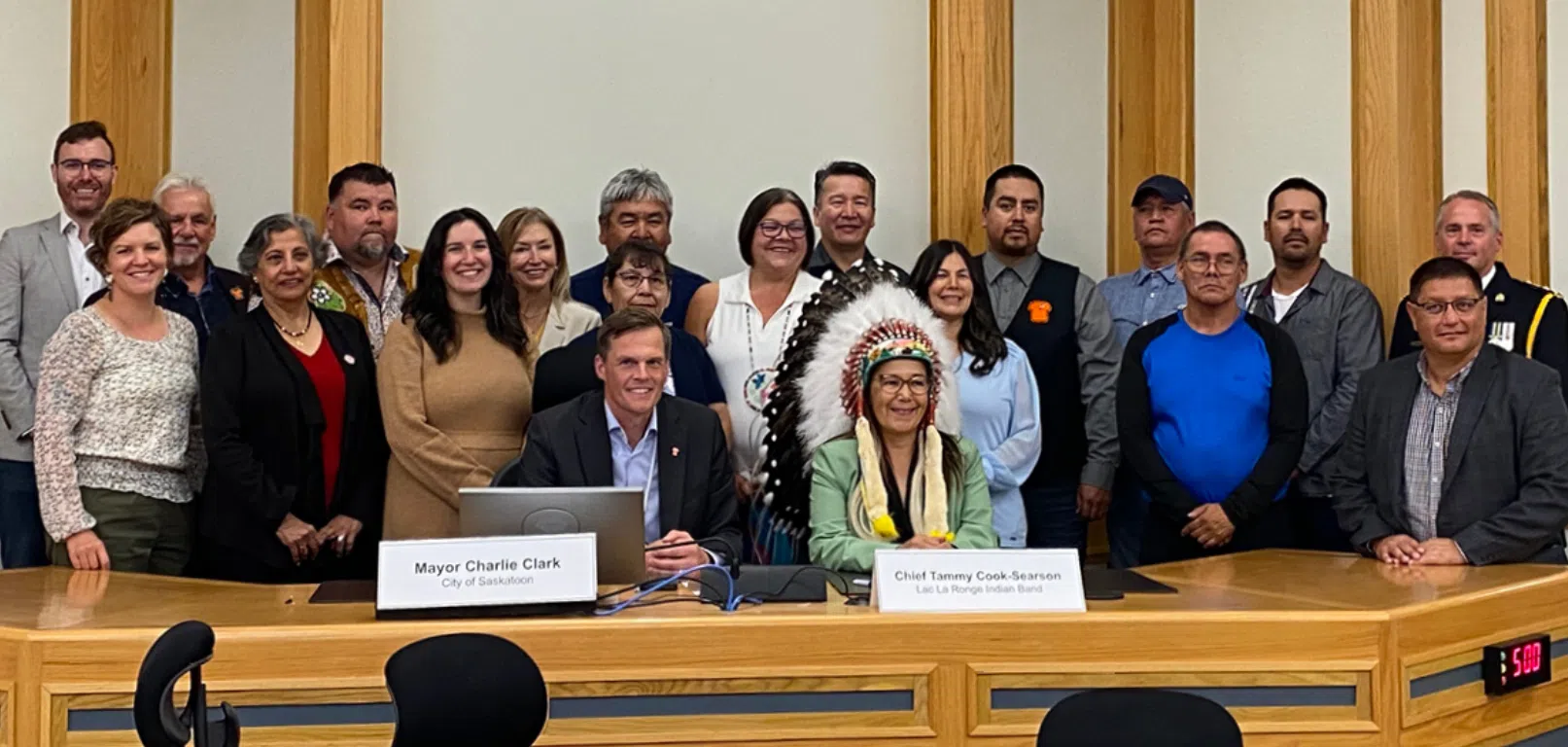The land at Saskatoon’s 221-Wheeler Street is on track to become an Urban Reserve for the Lac La Ronge Indian Band.
A new Urban Reserve Agreement was signed today between the Band and the City of Saskatoon, and if designated by the federal government, it will be the 10th urban reserve in Saskatoon.
Mayor Charlie Clark says there are several topics that need to be addressed when signing such an agreement. A municipal service agreement is created to declare what services the City will provide to the reserve, and how the First Nation will pay for it.
The First Nation has to pay the equivalent of what any other entity would pay for property taxes, and the City will provide the same services they do for any other property in return. There is also a policing agreement that must be made, as policing in the area will no longer be under City jurisdiction if the federal government designates the land as an Urban Reserve.
LLRIB Chief Tammy-Cook Searson says the process to create an urban reserve is generally a three-year undertaking, however the two parties are just one and a half years in, and already signing agreements. She says the fast-tracked process is a testament to Saskatoon’s leadership.
She says both Saskatoon’s management and residents are ready to embrace reconciliation and accept change.
The parcel of land, located near the Silverwood Golf Course, is already owned by the First Nation. It is home to Canada North Environmental Services, which is owned by Kitsaki Management Partnership, the business arm of the Lac La Ronge Indian Band.
Saskatoon has the most urban reserves over any other Canadian city.


















